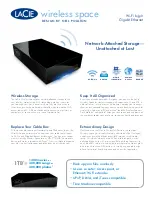Reviews:
No comments
Related manuals for E46S001

Network Space MAX
Brand: LaCie Pages: 2

BeoMaster 5
Brand: Bang & Olufsen Pages: 28

UNITISERVE -
Brand: NAIM Pages: 18

UniServer R2900 G3
Brand: H3C Pages: 15

SSG-2029P-ACR24H
Brand: Supermicro Pages: 136

F1UP0001uk
Brand: Belkin Pages: 8

SuperServer 1029U-T Series
Brand: Supermicro Pages: 1

SN4524
Brand: Patton Pages: 15

SuperServer 6123L-8R
Brand: Supero Pages: 105

RS160-E4 PA4
Brand: Asus Pages: 186

ADDS 6700
Brand: Boundless Pages: 33

TM2000B
Brand: Time Machines Pages: 24

SDSTX3110-121-LRT-B
Brand: Transition Networks Pages: 2

Industrial Ethernet Serial Server LES401A LES401A
Brand: Black Box Pages: 2

leS1116a
Brand: Black Box Pages: 8

DNS-3000
Brand: Advantech Pages: 110

ROC235B Series
Brand: Star Lake Pages: 50

GP
Brand: C-MOR Pages: 43

















